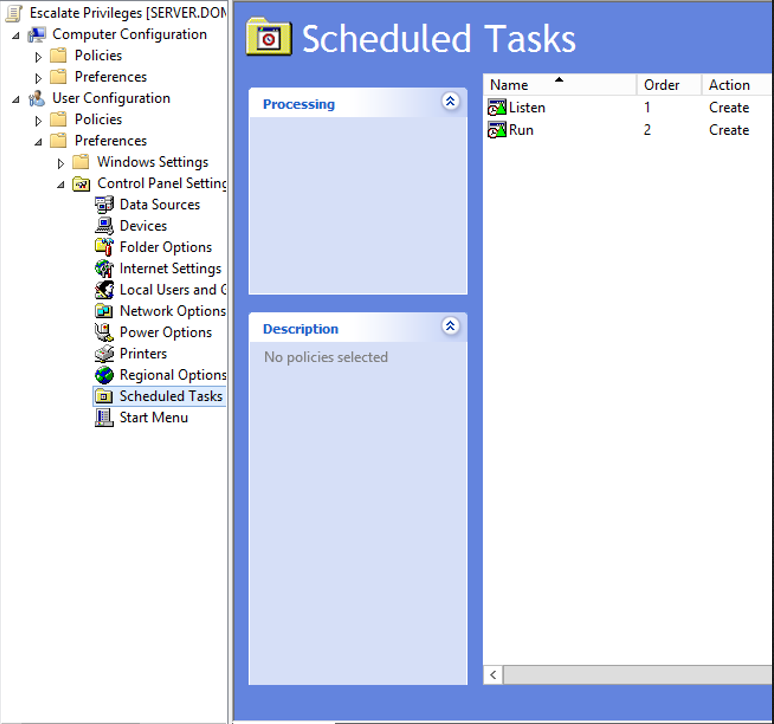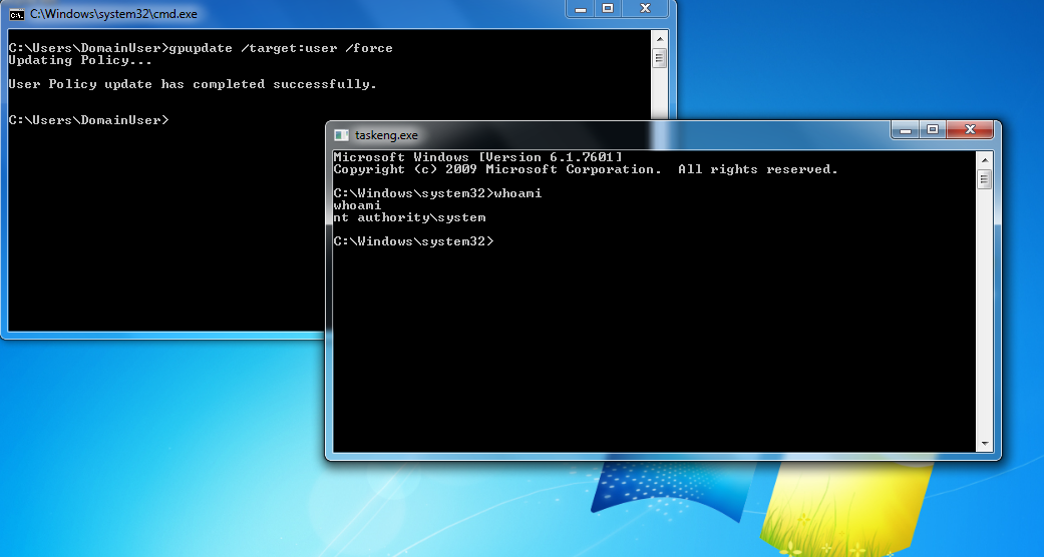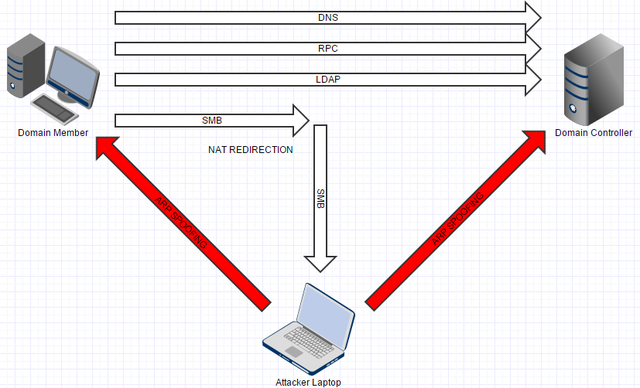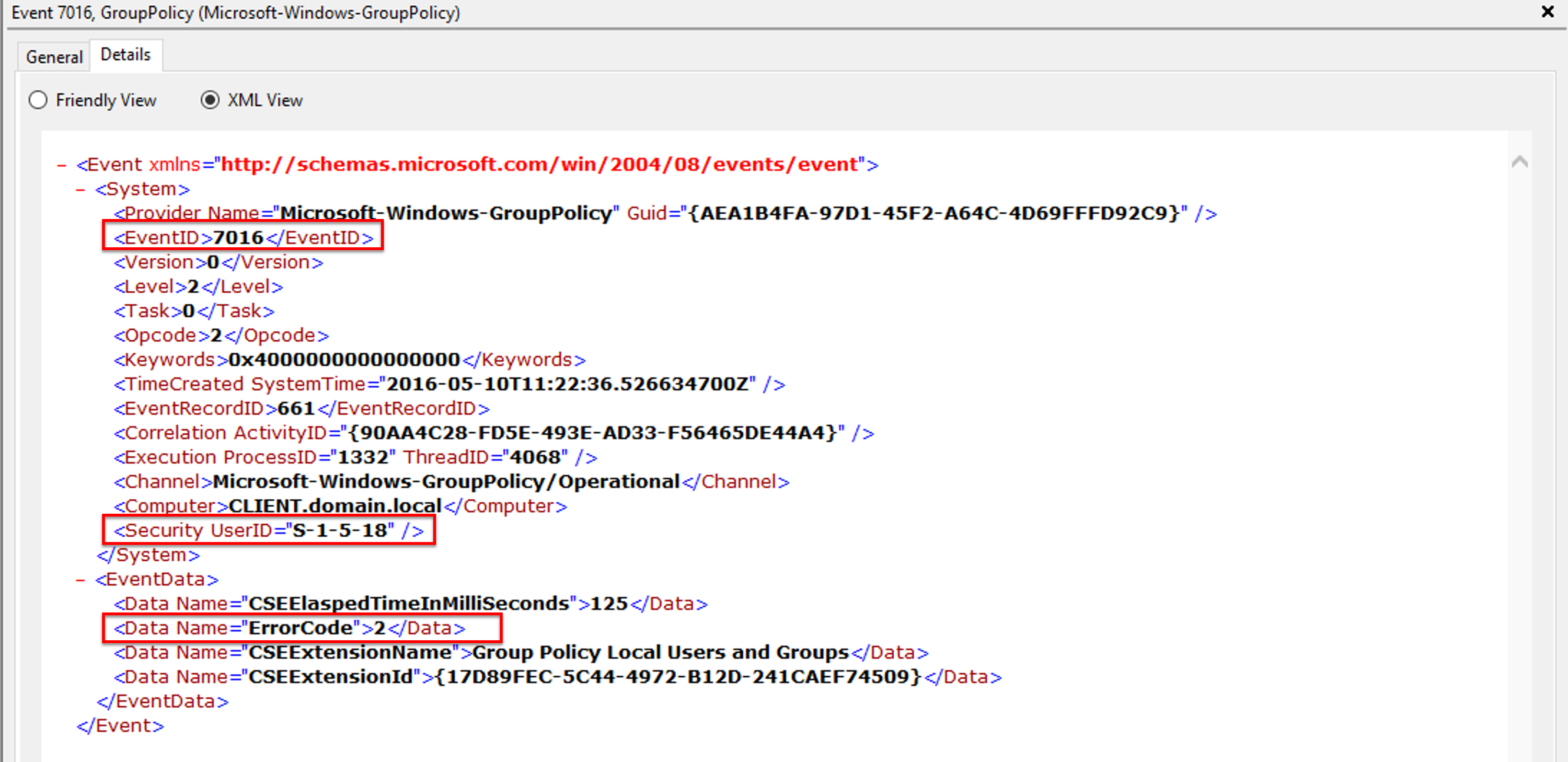Intro
This blog post is a continuation of my previous post which can be found here.
The reason I devided is because two seperate vulnerabilities come in to play in order to successfully retrieve the original user password and install your favourite malware :)
So without further ado, let's escalate our privileges to SYSTEM.
Step 3 – Privilege escalation to SYSTEM
We know that the trust between the client and Domain Controller (DC) is not always properly validated, we have a working Active Directory set-up and we have a working rogue DC.
The question is are there any other Windows functionality that is failing to properly validate the trust?
How about Group Policies?
- It works on all supported Windows versions
- There is no need for any additional (vulnerable) software
- No specific configuration requirements
There are 2 types of Group Policy Objects (GPO), Computer Configuration and User Configuration Policies.
Computer Configuration Policies are applied before logon, the machine account is used to authenticated to the DC in order to retrieve the policies and finally all policies are executed with SYSTEM privileges. Since we don't know the machine account password using Computer Configuration Policies is not an option.
However User Configuration Policies are applied after a user is logged in, user's account is used to authenticated to the DC to retrieved the User Configuration Policies and the policies are either executed as the current logged-on user or as SYSTEM.
Now this last type of Policy is interesting because we know the password of the user as we reset it to our likings. (see Part 1)
Let's create a Scheduled Task GPO that will execute NetCat as SYSTEM and finally will connect to the listening NetCat service as a the current user.

The "Listen" Scheduled task will simply run NetCat with the following command-line argument:
- nc.exe -l -v -p 3333 -e cmd.exe
In the Security options you can select NT AUTHORITY\System as the user account that will be used to run this scheduled task as shown below.

eThe "Run" Scheduled task will be simply connect to port 3333 using the following command-line argument:
- nc.exe 127.0.0.1 3333
You run this scheduled task as the current logged on user.
Windows 7
Now that we have a GPO that will execute some Scheduled Tasks, let's see if it works right out of the box?
Unless if there is some sort of trust validation implemented before the GPO is executed there is honestly no reason why this shouldn't work right?
Let's force a Group Policy Update on our Windows 7 client...

GAME OVER! =)
At this point I notified Microsoft (November 25th 2015) about this issue and they acknowledged (January 27th 2016) the problem and started working on a patch.
So why did it work?
Windows 7 fails to validate if the DC from where the Group Policies are being applied is indeed a trusted DC.
It is assumed that the user credentials are sufficient to acknowledge the trust relationship.
In this attack all encrypted traffic remains intact and doesn't require any modification whatsoever.
Is this really new?
Early last year in March 2015 a security researcher called Luke Jennings from MWR Labs demonstrated how he could gain SYSTEM level privileges through a Man-in-The-Middle attack.

By modifiying the SMB calls he was able to execute his own malicious code to get higher privileges. Microsoft responded with two patches MS15-011 and MS15-014.
Jennings conclusion was the following:
Even on Vista/2008 onwards, user settings group policy can be exploited if you know a user’s password to conduct a form of privilege escalation to gain SYSTEM on domain members. Microsoft have shown no intention thus far of providing a control to protect against this.
More information about his findings can be found here.
Windows 8.1 and 10
We know that Microsoft was aware of the fact that group policies could be abused to gain SYSTEM privileges, so maybe ... they implemented some additional security features in newer versions of the Windows OS.
Let's take Windows 10 and simply do the same as we did in Windows 7 and force a group policy update.

It didn't work :'(
As you can see it does however say that the User Policy update was successful but still throws out an error during policy processing.
Let's review the event log as the error suggests for any hints.

Looking around on the internet for "EventID 7016" and "ErrorCode 2" didn't help me any further.
Maybe there were any changes in the communication between the DC and the Windows 10 machine.
Let's compare the Windows 7 communication with the Windows 10 communication.

So we need to tackle this by setting the correct SID with the corresponding user on our rogue DC. There are however some difficulties.
If you are familiar with SIDs, you know that an SID of a domain user consists of a Domain Security Identifier (Domain SID) and a Relative Identifier (RID)
In our case "114261664-662940058-2894158534" is the Domain SID and "1104" is the RID.
Domain SIDs are randomly generated everytime a new Domain forest is created so matching it correctly is tricky. There are however multiple ways to still set it to the SID you want:
- Change Machine SID to the one you want before promoting Server to PDC of a new domain
- Use SAMBA NT4 Server, change the SID, upgrade it to SAMBA AD-DC
- Use commercial tools (SIDCHG)
However these techniques are lengthy, complex and prone to errors.
On May 6th 2016 Mimikatz developer Benjamin Delpy (@gentilkiwi) pushed a new version of Mimikatz with a new added module.

Mimikatz makes it possible to lookup, query, modify and add SIDs to various objects.
Let's change the SID of the user on our rogue DC to the one matching on the client.
Run Mimikatz as Administrator and run the following commands:
- privilege::debug
- sid::patch
- sid::modify /sam:[domainuser] /new:[new_sid]
NOTE: replace values between brackets accordingly

Now that we have changed the SID of the user object on our rogue DC let's try and force a group policy update again.
- gpupdate /target:user /force
IT WORKS!! ^^
Congratulations! Now you have the keys to the kingdom ;)
MS16-072 / CVE-2016-3223
After long 8 months Microsoft released a patch for this vulnerability on the 14th of June 2016.
And then this happened:

Microsoft still managed to break lots of Group Policy configurations around the world.
The patch changes the behaviour of how GPOs are being retrieved.
As previously mentioned user accounts were used to retrieve User Configuration policies, however after the patch the machine account is used to retrieve both the User and Computer Configuration policies.
Microsoft forgot to mention that the Computer objects need to have read access in order to retrieve the Group Policy configuration files.
More information about the issue can be found here.
Bypassing patch MS16-014
Yes, you've read it right! There is still a way to bypass the Windows Login screen and bypass Authentication ;)
More details will be released soon!
You can read the details here

